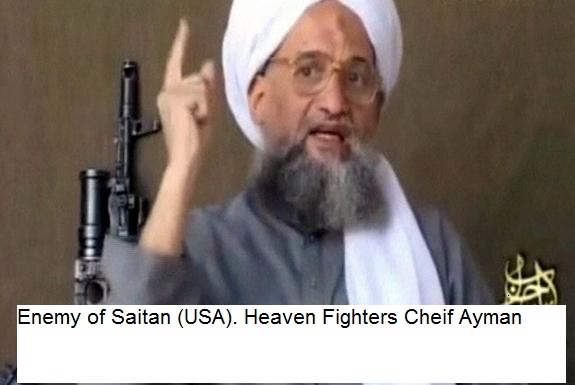
Communist
The state of Kerala, which gave the world its first elected communist government in 1957, now provides one of the world’s last bastions for communist parties that voters support. Less than a year ago, observers predicted that Kerala’s LDF government, led by the CPI(M), would be decisively defeated in state elections. That was the fate of the CPI(M) in West Bengal, thrown out of office after 34 years in power.
A remarkable comeback, inspired by an 88-year-old chief minister, brought the CPI(M)-led Front to within a whisker of retaining office in elections held in April 2011 but whose results were announced on 13 May. The LDF won 68 out of 140 seats, only four behind its Congress-led rival, the UDF.
True, the CPI(M) had lost 16 seats – down to 45 from 61 seats in 2006. True, also, that the UDF, led by the Congress Party, will form the next Kerala government. But with a majority of only four seats, the stability of the UDF government is uncertain. Only a reckless punter would bet on its completing a full five-year term.
The CPI(M), which controls a number of wealthy institutions, including a newspaper and a television channel, is well-placed not just to survive, but to be back in power inside five years. Far from being swept away, as many had predicted six months ago, the LDF won 45 per cent of the vote, only one per cent less than the UDF. It lost five seats by fewer than 500 votes.
Table 1: Kerala Assembly, Seats Won, 2011 and 2006 elections
|
Party
|
Seats 2011 |
Seats 2006 |
| Left Democratic Front (LDF) |
|
|
| Communist Party of India (M) |
45
|
61
|
| Communist Party of India |
13
|
17
|
| RSP |
2
|
3
|
| Janata Dal (Secular) |
4
|
5
|
| National Congress Party |
2
|
1
|
| LDF-backed Independents |
2
|
–
|
|
68
|
87
|
| United Democratic Front (UDF) |
|
|
| Indian National Congress |
38
|
24
|
| Muslim League Kerala State Committee |
20
|
7
|
| Kerala Congress (M) |
9
|
7
|
| RSP-B |
1
|
–
|
| KC-B |
1
|
–
|
| KC-J |
1
|
–
|
| Socialist Janata (Democratic) Party |
2
|
–
|
| Others |
–
|
15
|
|
72
|
53
|
|
140
|
140
|
Source: The figures have been extracted from Mathrubhumi-Malayam Daily (14 May 2011).
The pre-election predictions were dire. The CPI(M) had been pulverised in Kerala’s local- government elections in 2010 and in the national elections in 2009. Indications were that the same fate awaited the party in state elections.
The Congress Party has reason to be disappointed. It won only 38 seats and will need to be especially solicitous of its alliance partners, the Muslim League (20 seats) and the Kerala Congress (Mani), a Syrian Christian-based party strong in central Kerala and revolving around K.M. Mani (born 1933), which won nine seats. The Muslim League’s tally was the best in its 60- year history.
For 40 years, Kerala politics has been built around rival alliances, one anchored to the Congress Party and the other to the CPI(M). The two parties provide a relatively stable core with only occasional deserters. But minor parties scurry in and out of alliances as chance presents itself.
The new Assembly provides plenty of opportunity for scurrying. Five of the UDF’s 72 seats are held by ‘parties’ that in fact are individual enterprises and travel under names such as the Revolutionary Socialist Party (Bolshevik) [one seat] and Socialist Janata Dal [two seats].
The two top Congress leaders come from different religious backgrounds but the same social circumstances and locality. The new chief minister will be Oommen Chandy (born 1943), previously chief minister from 2004 to 2006. He is a Syrian Christian, the most aristocratic Christian tradition in India which traces its origins to the time of Christ and comprises about 10 per cent of Kerala’s people. Chandy received his higher education at Church Missionary Society (CMS) College, Kottayam, founded by the English CMS nearly 200 years ago.
Ramesh Chennithala (born 1956), president of the Kerala Provincial Congress Committee, is a Nair, the largest high-status caste in Kerala, perhaps as much as 15 per cent of the population. He is a product of Nair Service Society (NSS) College, Changanacherry, the flagship educational institution of one of India’s most successful caste associations, the NSS founded in 1914. It is half an hour down the road from Chandy’s CMS College.
Achuthanandan, the remarkable 88-year-old, has a different but impeccable pedigree for a Kerala communist. He is an Ezhava by caste. In the old days, Ezhavas were held to be a low caste (but not the lowest), associated with the cultivation of the coconut palm that abounds in Kerala. They constitute perhaps 20 per cent of the population, and their struggles for civil rights in the twentieth century drew many to the Communist Party. The unions that formed around the coconut industry, particularly the manufacture of coir, became a communist backbone. Achuthanandan worked in coir production as a youth, joined the party and spent five years in jail in the 1940s and 1950s, when the Communists attempted unsuccessful revolts against Indian governments.
Today, partly as a result of its fiercely competitive two-alliance system, Kerala has the best social statistics of any state in India. It has high literacy rates, both for men and women, long life expectancy, low infant mortality and a low birth rate. Virtually every child goes to school.
But Kerala’s most profitable exports are its people. Kerala nurses work all over the world, and the Arab states of West Asia have been serviced by hundreds of thousands of Kerala workers for
40 years – the past two generations. In Kerala itself, the economy in the twenty-first century has grown at a slightly faster rate than India’s as a whole, but the state retains its reputation for sluggish growth and as a tough site for investors, tested by aggressive unions and litigious citizens. The state’s worthy social and medical systems are underpinned by remittances from Kerala people working overseas. There is little budget room for infrastructure. The state of Kerala’s roads is abysmal, though a blitz on road repair early in 2011 may have helped bolster the government’s reputation sufficiently to keep it close in the recent elections.
Two vital questions arise from these elections. How will the result affect Kerala’s (1) economy;
and (2) social cohesion?
It is difficult to see the new government making economic breakthroughs. Though Kerala’s education system creates a highly literate population, higher and technical education are undistinguished. Kerala is a long way from being seen as a knowledge hub like Bangalaru.
The UDF’s 44-page election manifesto is a long checklist aimed at ticking the dance programme of every group in the state. It contains few ideas, but plenty of undertakings such as:
1. Procurement price of agricultural products will be raised proportionate to cost of production (p. 5);
2. Public Sector Units will be strengthened (p. 11);
3. Rules will be framed to entrust ownership right of Public Sector Units with the public (p. 11);
4. Due to high density of population and scarcity of land, service sectors like tourism and information technology offer better development prospects to Kerala than agriculture and industry. To achieve development in this sector, dearth of infrastructure needs to be solved expeditiously (p. 14);
5. The pay and pension of State Government employees will be revised ensuring Central parity (p. 36)
6. A free medical scheme will be introduced to the State Pensioners and their dependents (p.36).
It concludes that ‘the most suited industry for Kerala is information technology (IT)’ (p. 13) and places much hope on being able to expand Kerala’s IT capacity. But there is little suggestion of breaking with the long-standing Kerala pattern of promising more government services, even if they are often under-funded and patchily delivered.
Kerala is socially complex. Muslims make up about 23 per cent of the population, concentrated in the north of the state. Malappuram is one of only about 20 districts in India where Muslims are a majority. The Muslim League won 12 of Malappuram’s 16 seats, and the UDF took 54 per cent of the votes cast, the highest score in any district.
Christians make up another 19 per cent of the population, and the other successful partner in the UDF is the Kerala Congress (Mani), a Christian-based aggregation that revolves around the wily K.M. Mani, a fixture in Kerala politics, playing both sides against the middle, for 50 years. Mani’s Congress won nine seats; eight of his winners are Christians.
Castes and religion are explicit, understood and integrated into Kerala’s politics, and they have not led to significant violence for more than 80 years. One has to go back to the Mapilla, or Malabar revolt, of 1921 to find such events.
In the past few years, there were allegations that the CPI(M) was flirting with radical Muslim organisations in an attempt to win favour with Muslim voters. If this were so, the idea was disastrous. The Muslim League has never done better than in these elections, and the three biggest majorities all went to Muslim League candidates. The largest margin in the state was
44,500 votes in the district headquarters town of Malappuram.
Political affiliation has been more likely to lead to violence. Indeed, on the day the poll results were announced (13 May 2011), a CPI(M) worker in north Malabar was murdered and a local Congress leader taken into custody, allegedly as the killer.
Kerala confronts substantial social problems. Because it is highly literate and effectively administered, it records data more reliably and publishes its problems for all to see. On the basis of such data, the state has the highest per capita alcohol consumption and second highest suicide rates in India. Alcohol production and consumption connect with powerful political interests in the liquor business; suicide appears to be linked to the large numbers of migrants and resulting dislocation of households and personal relationships.
The most significant result of the 2011 elections is the survival of the CPI(M). That is not a bad thing. In spite of the puzzling devotion of intelligent people to graven images like Lenin and Stalin, party members often display a rare dedication, honesty and courage. The All-India
Democratic Women’s Association (AIDWA) is one of the bravest organisations in the country. In the Kerala survival story of 2011, much appears to be owed to the old proletarian battler, Achuthanandan. Whether men and women half his age can construct a radical party for the twenty-first, and not the nineteenth, century is a question that Kerala’s future will answer.
11.127123
78.656894
















